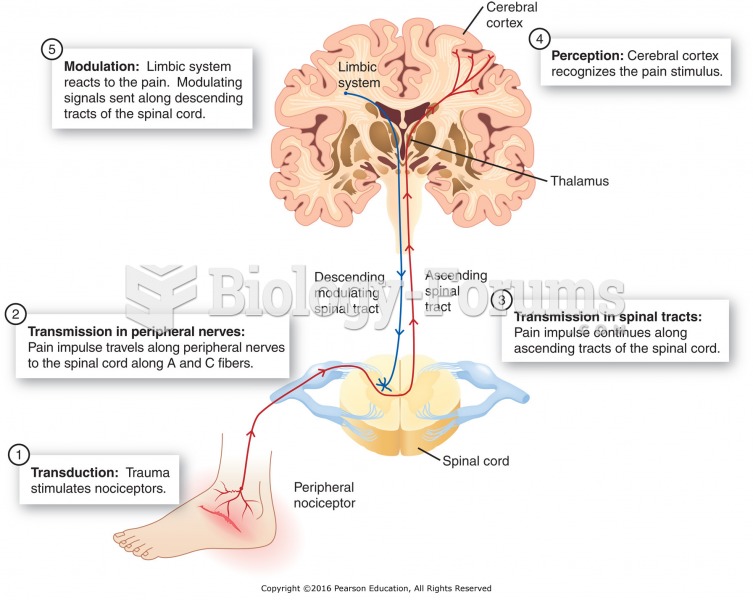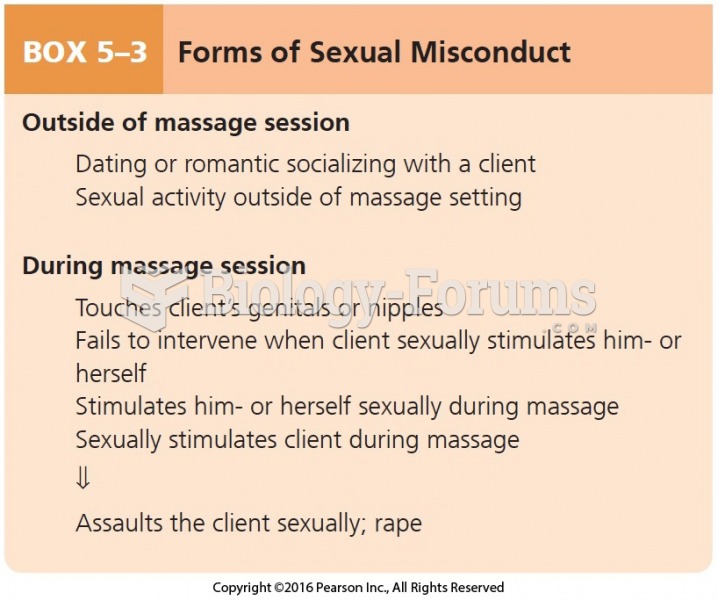|
|
|
More than 150,000 Americans killed by cardiovascular disease are younger than the age of 65 years.
Stevens-Johnson syndrome and Toxic Epidermal Necrolysis syndrome are life-threatening reactions that can result in death. Complications include permanent blindness, dry-eye syndrome, lung damage, photophobia, asthma, chronic obstructive pulmonary disease, permanent loss of nail beds, scarring of mucous membranes, arthritis, and chronic fatigue syndrome. Many patients' pores scar shut, causing them to retain heat.
The B-complex vitamins and vitamin C are not stored in the body and must be replaced each day.
The people with the highest levels of LDL are Mexican American males and non-Hispanic black females.
The longest a person has survived after a heart transplant is 24 years.







